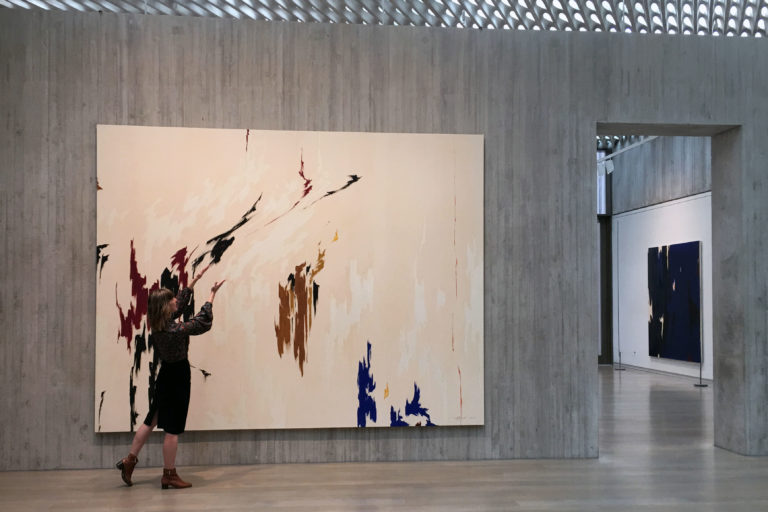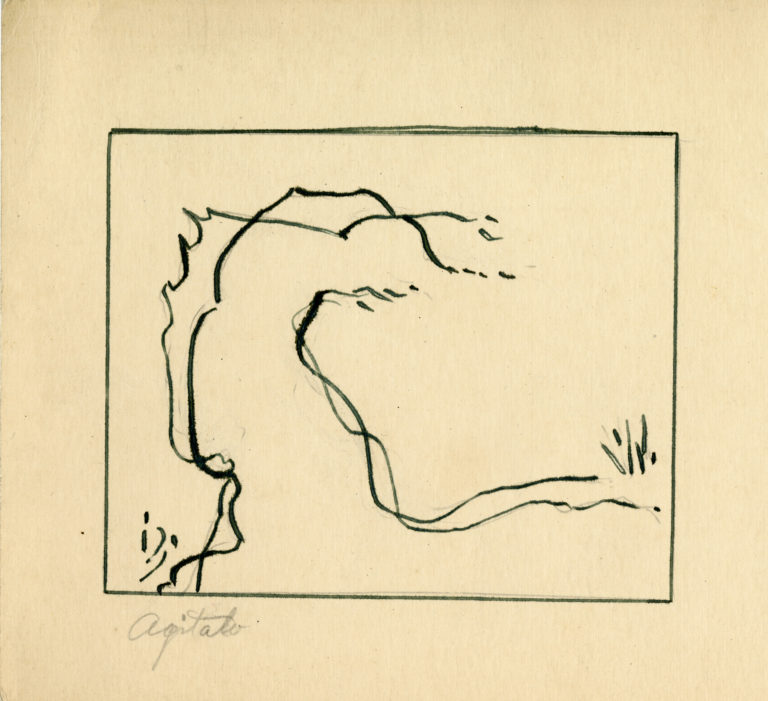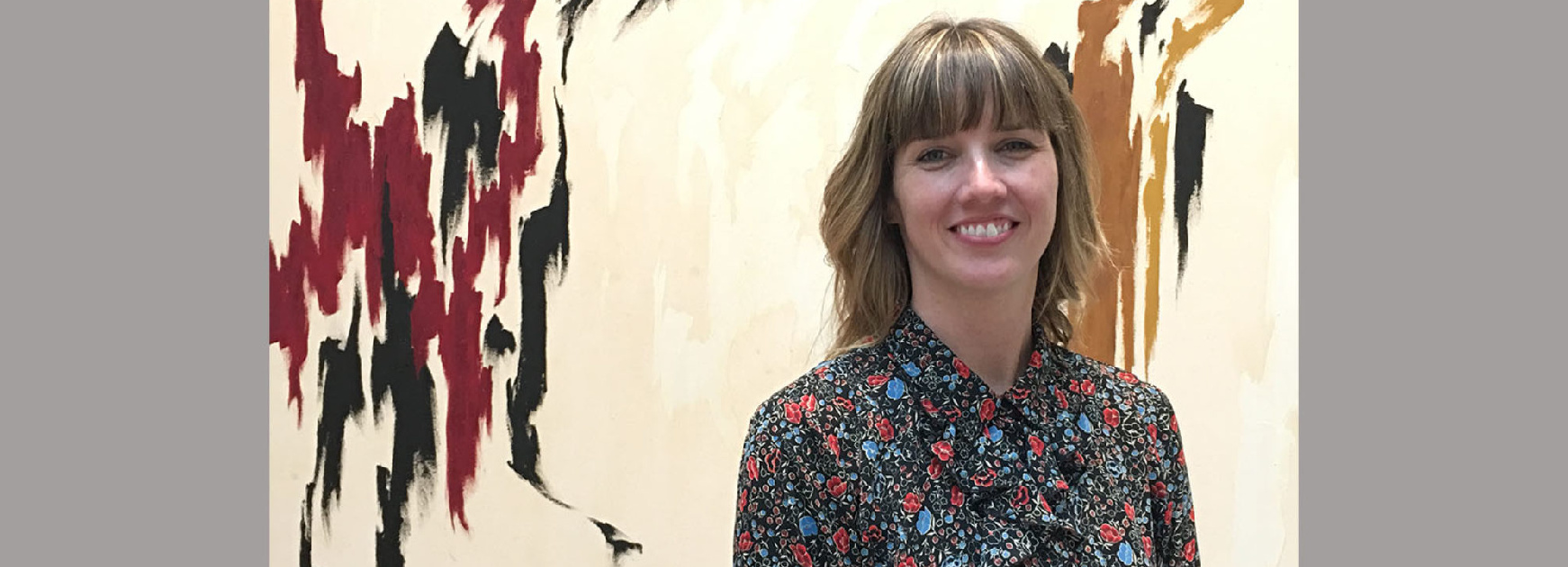By Kristin Feldkamp
We’re taking you behind the scenes again and introducing yet another painting as seen through the eyes of those who spend serious quality time with Clyfford Still’s works—our staff. The newest edition of Staff Favorites introduces you not only to a work of art by Clyfford Still, but to the newest member of the Clyfford Still Museum staff as well. Meet Nicole Cromartie, director of education and programs. On a recent Monday afternoon, Nicole and I met in the galleries for a conversation about her role at the Museum and PH-960. EXCERPTS:
Kristin Feldkamp: Tell us about what you do at the Clyfford Still Museum?
Nicole Cromartie: My title is director of education and programs. What does that mean? I oversee all of our school and teacher programs as well as adult programs and I work on interpretation, accessibility, and evaluation. The short answer is that I think about all of the ways in which different audiences might connect with our collections and exhibitions and how to make those experiences accessible and meaningful.
KF: You’ve been at the Clyfford Still Museum for a little over two months now. Where were you before you came here?
NC: My [work] background is entirely in museum education. Most recently, I was at the High Museum of Art in Atlanta. I left the High, spent a year at the National Center for Civil and Human Rights (also in Atlanta) starting their education programs, and then went back to the High.
KF: You picked PH-960. Do you want to tell us why it stood out for you?
NC: The thing that stands out for me about Clyfford Still’s work, especially work of around this time period [1960] is how immersive it is and the relationship of the painting to the body. I love all of his really large horizontal paintings and that you can get lost in them. You get close to the work and it surrounds you on all sides. It’s no longer an object; it feels like an environment. And it’s exciting to consider from the artist’s perspective, that Still was thinking about the viewer and their experience of the work in addition to what he made. I also love how much space he’s included — the areas that aren’t painted– there’s a lot of space for you to simply be in this painting.
KF: The colors are a little unusual too. There’s brown which is very earthy.
NC: And so much creamy white on top of the already creamy canvas. I didn’t mention that I have a background in ballet. The movement in this painting is a huge draw.
KF: It has a dancer feel for me too. As a side note, there’s a ballerina who has created extraordinary images in the galleries. She shares them on Instagram.

NC: I’ve seen those. They’re beautiful. I’ve been doing ballet since I was three and I take a class at Colorado Ballet at night. I’m especially drawn to this shape [moves her arm up and along a curve]. This curve along the top left corner is so beautiful. I was looking in the archives this morning at some of Still’s teaching resources from when he taught at Washington State (1933 and 1941). He talks about how verticals and horizontals suggest static qualities and that diagonals suggest motion. He also says movement and repose must always be associated, and you see both of those things in this painting. You have still vertical figures all across the painting and then just in that one moment this sweeping, feeling gesture across the canvas.


KF: And where this shape is positioned, it’s uplifting versus downward pointing.
NC: That idea of upward motion– Still seems to write a lot about where the eye is going to go and how artists can think about that kind of rhythm and control (maybe control isn’t the right word). Thinking about the relationship of this painting to me while I’m looking at it, my head wants to go up and off the top of the canvas with those lines. It’s incredible. It’s like a breeze came along and swept all the paint.
